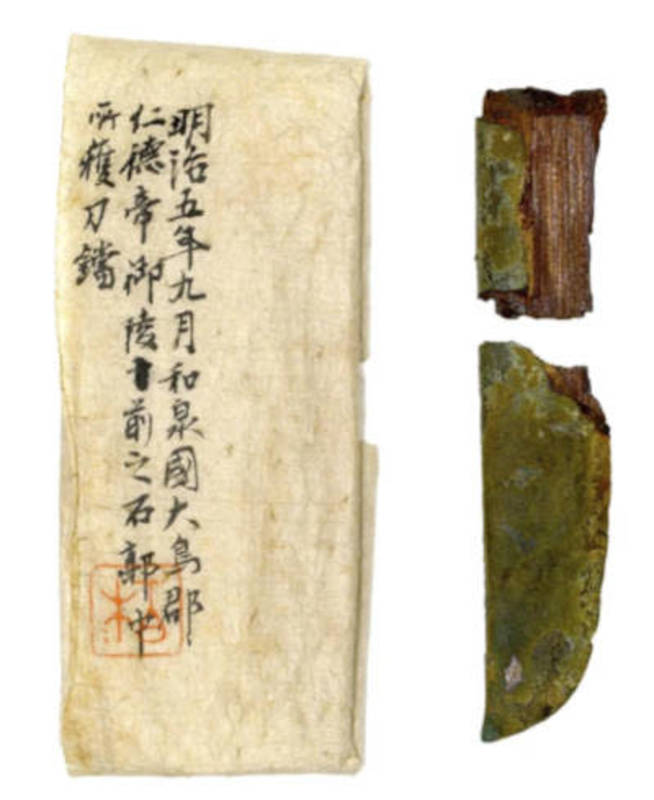Men’s Journal aims to feature only the best products and services. If you buy something via one of our links, we may earn a commission. Prices are accurate and items in stock at time of publishing.
Archaeologists in Japan have located long-lost treasures from the tomb of Emperor Nintoku, which have been missing for nearly 200 years, perAncient Origins.
The artifacts were discovered amongst a private collection belonging to Masuda Takashi, a wealthy Japanese businessman and art collector who lived from 1848 until 1938. It was a most unexpected spot to find the treasures, which had been missing since 1872 when they were stolen from the country’s largest burial mound. The relics were obtained by the Kokugakuin University from a private art deal last year, still wrapped in the original paper and bearing handwritten labels with the authentic seal of Kaichiro Kashiwagi, who originally documented the mound’s contents.
Researchers speculate that, due to the conditions under which Kashiwagi examined the mound’s artifacts, he was potentially able to make off with some of the contents following his work. After archiving the coterie of knives, armor, helmets, sword fittings, and glassware, Kashiwagi was required to seal the chamber to prevent the tomb from being excavated. That effectively made him the only person to know the contents of the tomb, with no one else able to check his inventory report.
Archaeologists Say These Artifacts Were ‘Prestige Items’
A gold-plated knife is amongst the most rare of the discoveries. Still in its original cypress sheath and wrapped in a gold-plated copper, researchers say that no other such knife is known to exist within fifth-century kofun burials. It’s unlikely the knives were used for combat due to how they were stored and created, which scientists say represents the cutting-edge of craftsmanship at that time. “These were not battlefield weapons,” explained Kokugakuin University archaeologist Taro Fukazawa, adding that they were most likely used in ceremonies. “They were prestige items, created solely as offerings, demonstrating the immense political and economic power of the imperial court.”

